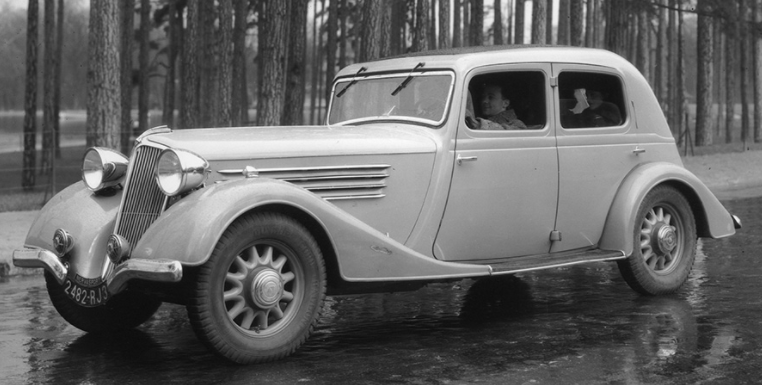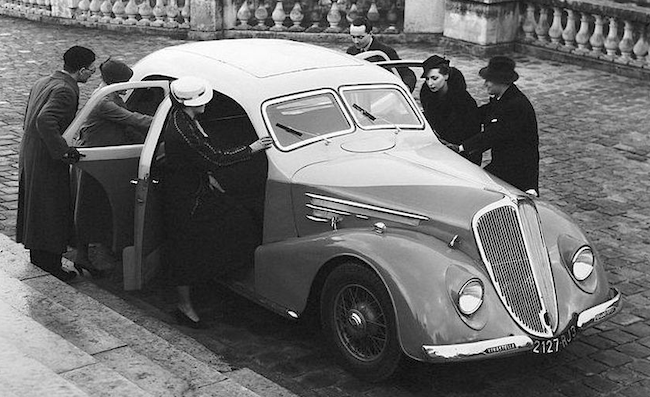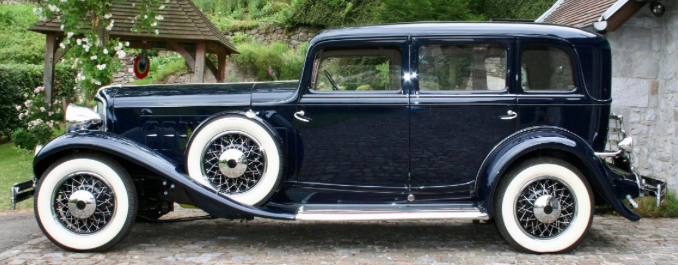I wrote a whimsical take on its similarity to an Army Air Corps bomber here.
Its principal designer was Amos Northup (1889-1937), who was in charge of the Murray body company's stying section: more information here. As mentioned there, Northup slipped on Ice, fell, and died of head injury a few days later. Consequently, the Graham design was finalized by others, though Northup's theme was retained.
In the Gallery below, I suggest that his theme was gestating in the form of his redesigned 1937 Willys cars. Further, I speculate that a side (or intentional?) effect was creating a longer hoodline on what otherwise might have been a stubby-looking design similar to those of other, similar size, cars on the market.
Unless noted, images are of for-sale cars.
A Graham and Similar Size 1938 Sedans
1938 Chrysler Royal
Its wheelbase is 119 inches (3023 mm).
1938 Buick Special
The wheelbase for this Buick and the following two examples is 122 inches (3099 mm). Its hood is comparatively long because it had to house an in-line eight cylinder motor, rather than a shorter six-cylinder engine.
1938 Packard Six - Mecum auction photo
This entry-level Packard's hood seems shorter than those on the other similar-size cars.
1938 Pontiac Eight
1938 Graham
Wheelbase is 120 inches (3048 mm), 25 mm longer than the Chrysler and 50 mm shorter than the other cars. Note the longer hood, both actual and as a proportion of the car's length.
Some Grahams Plus a Willys
1937 Willys - advertising image
Willys was redesigned for 1937. Northup's hood/grille ensemble thrusts forwards, though not as dramatically as on the 1938 Graham. Headlight assemblies are atop the fenders, another feature used on the Graham.
1937 Willys
Willys' hood would have been extremely short had Northup not thrust it forwards.
1938 Graham
Front quarter view emphasizing the hood and headlights. One might estimate how much shorter the hood would have been had it truncated near the radiator.
1938 Graham walkaround
The front end is dramatic in a Moderne, sort of streamlined way. I rather like it.
The front is stretched in what might be called an artificial manner. But that makes the car less stubby looking.
The Graham's rear is conventional late-1930s.


















































